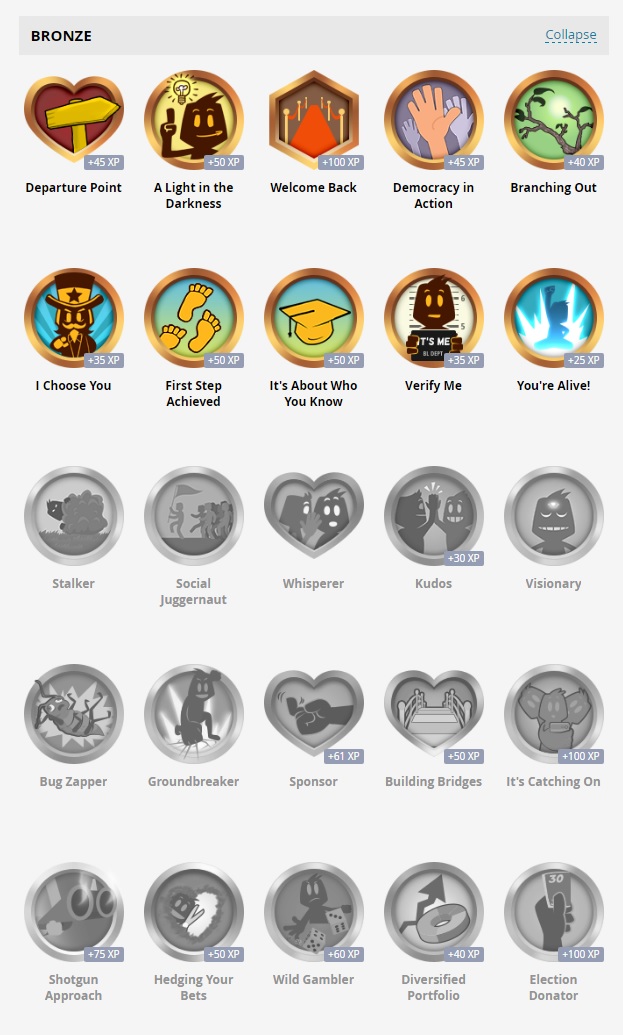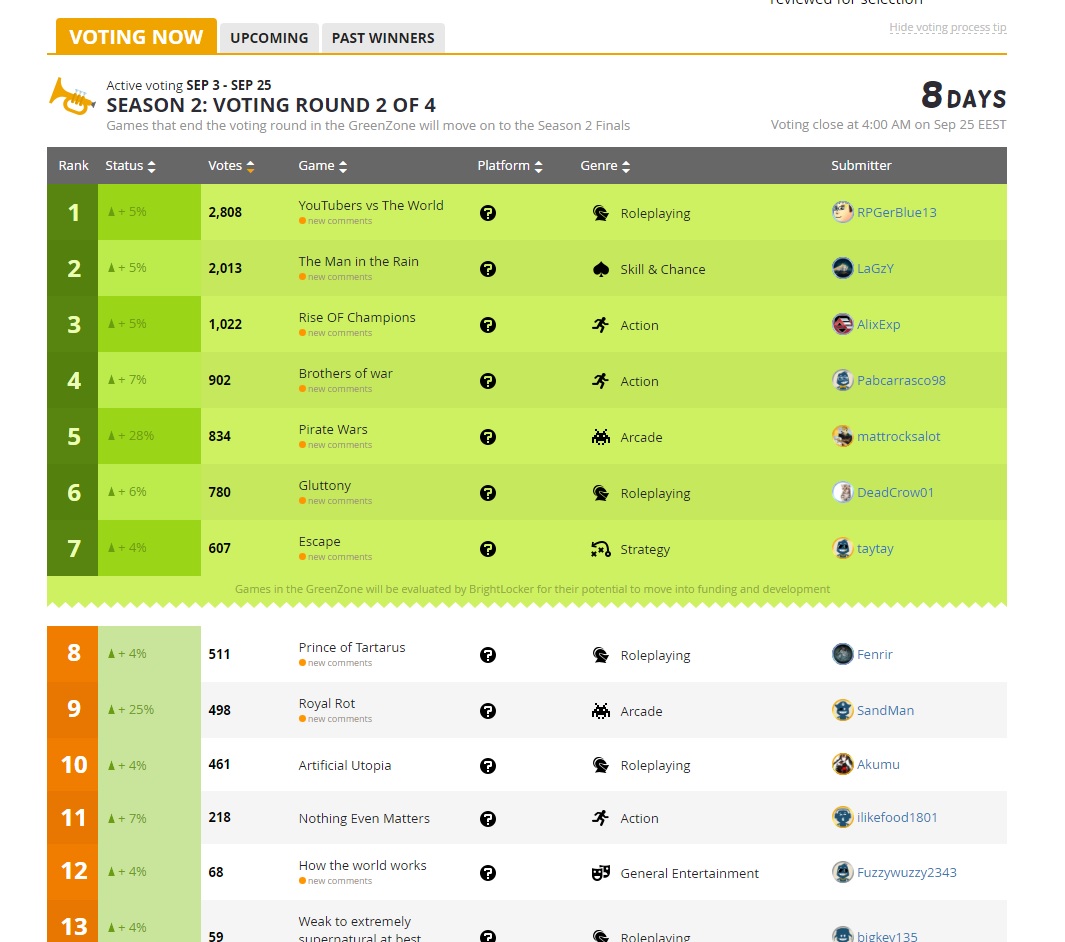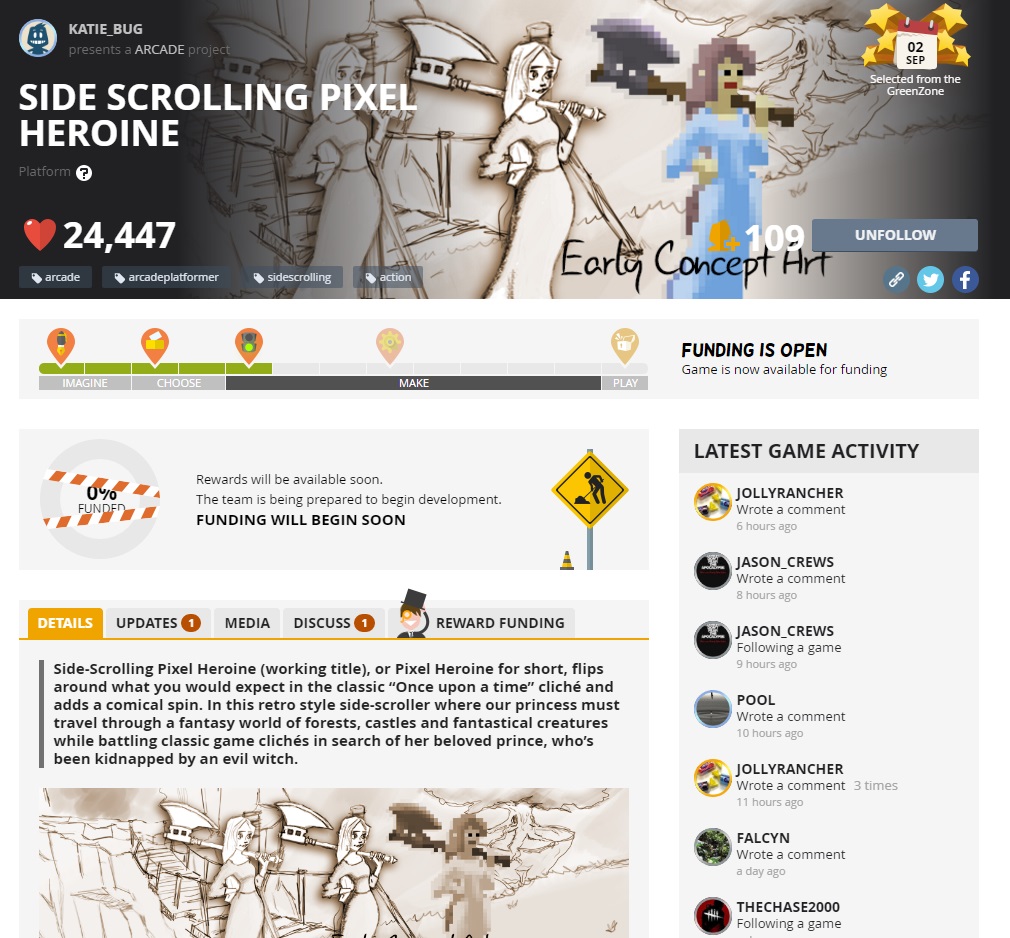I’d be surprised if you’ve heard anything about BrightLocker in the past few months. Ever since I covered the up and coming crowdfunding platform last November, there hasn’t exactly been a ton of press coverage and information surrounding the website. Interaction on its social platforms isn’t common, and numbers aren’t exactly great either. In reality, all of this should spell doom for a crowdfunding platform which relies on a big, active community to succeed.
Needless to say, I was surprised when I found out that BrightLocker actually launched this May. Its current state? Not so great. But before delving deeper, let’s briefly go over the platform’s general ideology.
What Is BrightLocker?
We’re basically looking at an equity-based crowdfunding platform founded by a bunch of industry veterans coming from companies such as EA, Blizzard and Sony. In short, the platform offers users a chance to pitch game ideas, vote for said pitches, and eventually invest in the winners. The investment bit comes in when the highest voted pitches move on to the “make” stage, where in-house development teams take responsibility for actually turning said ideas into reality. At this iteration, fans also get to participate in the general design discussion while voicing their ideas further throughout the development’s duration.
On paper, all of this sounds reasonably intriguing. Promoting community collaboration through constant voting and communication is always welcome and having in-house teams handling development seems like a great way of eliminating the possibility of projects getting cancelled or abandoned. An equity-based crowdfunding platform with such fundamentals should have at least some potential. However, now that the website is fully operational, things aren’t looking all that bright.
Gamification
Most notably, the dreaded concept of gamification is central to the way the platform works. This is immediately apparent, as BrightLocker requires you to register or log-in before proceeding to the website’s full form. Once you do so, you slowly get introduced to mechanics such as badges, leaderboards and account experience – those are deeply rooted into this system and attained by performing all manner of menial tasks. For example, tutorials are implemented when you visit most of the website’s pages, with awards given out simply for clicking through menus for the first time. You get badges by doing basic things like following 10 games, submitting a game idea or posting in the website’s forum.
You might be wondering what all of this has to do with crowdfunding. In some weird and highly convoluted way, though, it all loops back to the idea of voting for ideas submitted by fans. Essentially, BrightLocker operates on the basis of voting seasons which last for several weeks. During those periods, users can support their favorite ideas by using a limited amount of votes tied to their accounts. While those can be spent multiple times on a single idea, acquiring more is done either by collecting badges or by purchasing gold. Badges are limited, gold is purchasable with real cash, and eventually you might get into a situation where votes are only attainable through paid microtransactions.
Are you lost yet? If so, I don’t blame you. Both in theory and practice, BrightLocker seems to be a repetitive grind relying solely on carefully structured business models.
Where Are The Game Developers?
Needless to say, all of this sounds a bit fantastical, especially considering how simple and uninspired most ideas on the website are. While I initially thought that actual game developers would be involved in the pitching process, only a quick glance is needed to realize that most ideas come out of people with no real game-making experience. To give you an example, let’s look at the two winning ideas that came out of BrightLocker’s first voting season.
The first winning entry, labeled Side-Scrolling Pixel Heroine, describes a Shovel Knight-inspired platformer where the princess must save the prince. As such, only basic mechanics such as jumping, squatting and attacking are listed. The second one, named Gunslinger, offers a mobile experience where players can challenge each other in a Western-inspired shootout governed by GPS location. This one might be a tad bit more original, apart from the fact that its “sample gameplay video” practically shows footage from a Mobile Strike advert.
As you can see, those aren’t exactly fleshed out concepts. Sure, anyone can come up with a great idea, but it takes a whole lot more to know whether a concept has any potential. More often than not you’d begin by drawing out your ideas on paper, just to get a grasp of what you’re working with. Then you might want to prototype something physical or digital, at which point the game starts shaping up in the most rudimentary level. These initial struggles are missing from pretty much all game ideas submitted to BrightLocker.
A Foundational Problem
I’m not trying to criticize the authors of these ideas; there have been hundreds of submissions. I’m sure that most of them are a result of people’s genuine passion for games. I’m more skeptical towards BrightLocker’s intentions, and how involved “creators” would be during development. The concept of giving users an opportunity to affect the development of a game sounds great on paper, but also appears somewhat flawed when you consider that we’re talking about people with little to no experience in making and designing games. This is where BrightLocker really falls apart.
Perhaps this is due to the platform’s overall focus on making user involvement as simple as possible. However, this positive approach might fall short once the “make” process kicks in. As of now, Side-Scrolling Pixel Heroine is the only idea sitting comfortably at the funding and development stage, with actual funding staying hibernated in a “will begin soon” state for several weeks now. With only a few members of the website’s development teams posting ideas and questions for users to discuss, there’s an obvious lack of information in regards to what we should expect.
Ultimately, BrightLocker’s problems remain masked behind thinly veiled game-like elements. Although its second voting season is currently underway, we’re left in a position where waiting is the only option.








In an attempt to avoid going too negative on the platform, I will say that Side-Scrolling Pixel Heroine’s slow progress is certainly understandable considering how soon the idea was picked as a winner.
It seems the whole idea of the platform is flawed, yet the article seems to suggest that the problem is gamification. Gamification is great when applied to a good product, but it can’t fix a bad idea. So I would not blame gamification for the lack of success of this platform. It just seems that designers spent more time applying gamification than thinking on their product, which is sadly a common mistake.